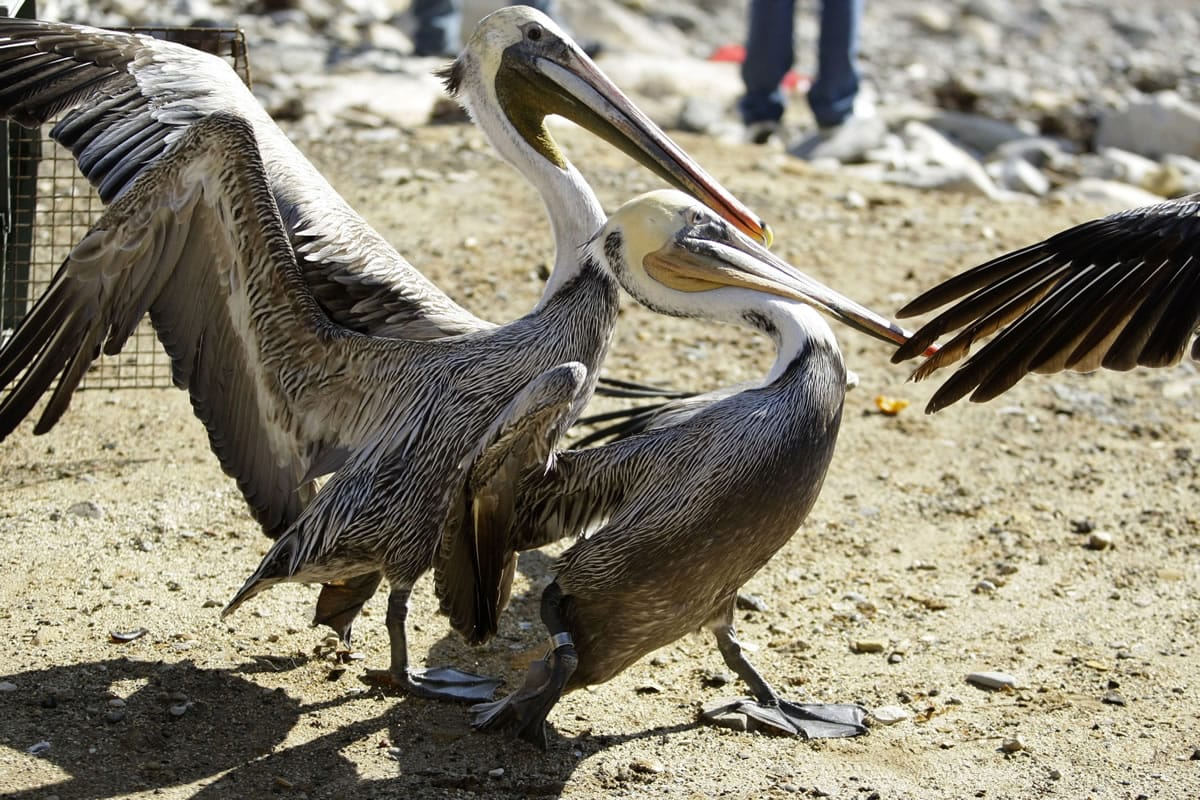GRANTS PASS, Ore. — Scientists and conservation groups fear the crash in West Coast sardine stocks, which has triggered deep cutbacks in commercial fishing, is also starving brown pelicans that feed off California, Oregon and Washington.
Federal budget cuts have left scientists unable to do the research to figure out exactly what is going on.
A formal status report required by the Endangered Species Act is due next year, but Jeff Phillips, deputy assistant field supervisor for the U.S. Fish and Wildlife Service in Ventura, Calif., said it is not clear whether there will be money to do it.
The California brown pelican was declared an endangered species in 1970 after its population was pushed to the brink of extinction by the pesticide DDT, which caused the bird’s eggshells to become so thin that chicks could not hatch. After DDT was outlawed, the bird made a recovery and was taken off the list in 2009, when the West Coast population was 150,000.
Breeding has been good in Mexico’s Gulf of California, which accounts for 90 percent of the West Coast birds, but no monitoring was done this year on the colony in the Channel Islands off Southern California, said Dan Anderson, emeritus professor of wildlife biology at the University of California at Davis. Anecdotal reports suggest breeding was lousy.
“There is long-term data on pelican populations, but what’s going on right now? Who knows? There is no systematic monitoring. It has been kind of a hit or miss thing,” he said.
One hit comes from the 2013 Northwest survey by the Oregon Coast National Wildlife Refuge Complex. It found 7,018 brown pelicans, half the average of the past decade, and the fewest since 1999.
California brown pelicans eat mostly sardines and anchovies, which school near the surface, making them a perfect target for pelicans when they dive into the water and fill their beaks. Sardines are well known for cyclical population booms and busts. The most recent assessment for the Pacific Fishery Management Council put their overall biomass at 28 percent of a peak in 2006, leading to a decision to cut fishing harvests by two-thirds next year. Anchovies typically fill the gap when sardines crash, but it is not clear whether they are stepping up this time.
Sardines were declining in 2010 when wildlife rescue centers in California were filled with emaciated pelicans. The same year, young pelicans attacked murre nesting colonies in Oregon, shaking the chicks until they regurgitated fish, then eating the fish. They did it again in 2011 and 2012, said Robert Suryan, associate professor of wildlife at Oregon State University Hatfield Marine Science Center.
“Hundreds of murre chicks littered the shoreline,” he said. “It’s a good example of what happens when you are hungry, and what you’ll do to get food.”



